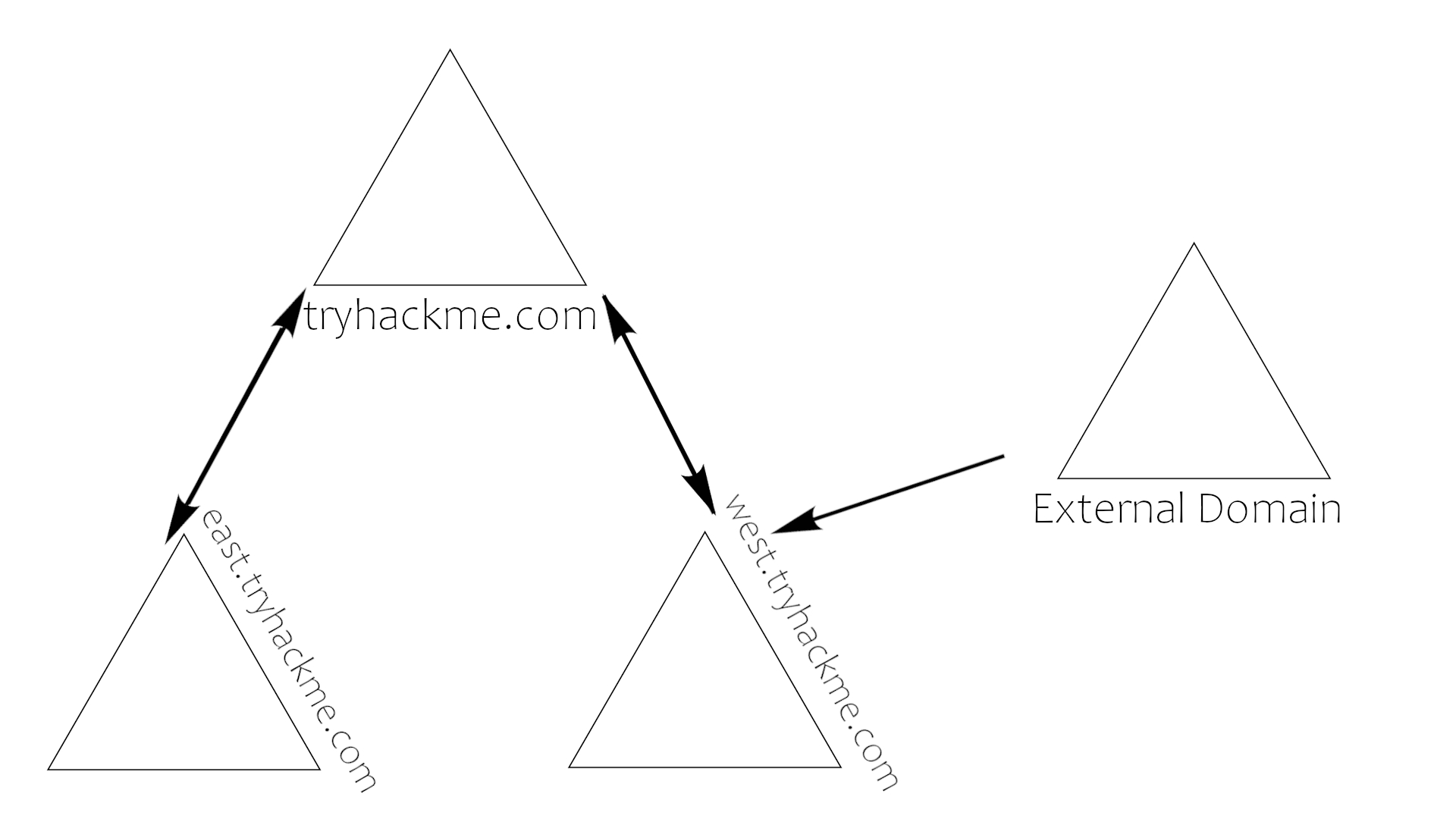Trusts + Policies
Trusts and policies go hand in hand to help the domain and trees communicate with each other and maintain "security" inside of the network. They put the rules in place of how the domains inside of a forest can interact with each other, how an external forest can interact with the forest, and the overall domain rules or policies that a domain must follow.
Domain Trusts Overview -
Trusts are a mechanism in place for users in the network to gain access to other resources in the domain. For the most part, trusts outline the way that the domains inside of a forest communicate to each other, in some environments trusts can be extended out to external domains and even forests in some cases.

There are two types of trusts that determine how the domains communicate. I'll outline the two types of trusts below:
Directional - The direction of the trust flows from a trusting domain to a trusted domain
Transitive - The trust relationship expands beyond just two domains to include other trusted domains
The type of trusts put in place determines how the domains and trees in a forest are able to communicate and send data to and from each other when attacking an Active Directory environment you can sometimes abuse these trusts in order to move laterally throughout the network.
Domain Policies Overview -
Policies are a very big part of Active Directory, they dictate how the server operates and what rules it will and will not follow. You can think of domain policies like domain groups, except instead of permissions they contain rules, and instead of only applying to a group of users, the policies apply to a domain as a whole. They simply act as a rulebook for Active Directory that a domain admin can modify and alter as they deem necessary to keep the network running smoothly and securely. Along with the very long list of default domain policies, domain admins can choose to add in their own policies not already on the domain controller, for example: if you wanted to disable windows defender across all machines on the domain you could create a new group policy object to disable Windows Defender. The options for domain policies are almost endless and are a big factor for attackers when enumerating an Active Directory network. I'll outline just a few of the many policies that are default or you can create in an Active Directory environment:
Disable Windows Defender - Disables windows defender across all machine on the domain
Digitally Sign Communication (Always) - Can disable or enable SMB signing on the domain controller
What type of trust flows from a trusting domain to a trusted domain?
What type of trusts expands to include other trusted domains?
Last updated
Was this helpful?